
STUDY GUIDE
What a piece of work is a man! how noble in reason! how infinite in faculty! in form and moving how express and admirable! in action how like an angel! in apprehension how like a god! the beauty of the world! the paragon of animals! And yet, to me, what is this quintessence of dust? man delights not me: no, nor woman neither, though by your smiling you seem to say so.
HAMLET, ACT II, SCENE II
WILLIAM SHAKESPEARE
Fat Ham first premiered in 2022 at The Public Theater as a co-production between National Black Theatre and The Public Theater. Fat Ham made its Broadway premiere on April 12, 2023.
THE BROADWAY PRODUCTION FAT HAM WEST COAST PREMIERE
03.27–04.28.2024 GIL CATES THEATER
This guide is to be used for educational purposes only.
STUDY GUIDE COMPILED BY
Brian Allman
COVER PHOTO BY
Justin Bettman
SPECIAL THANKS TO
Brian Dunning, Spencer Doughtie, Olivia O’Connor, Mark J. Chaitin, Tarell Alvin McCraney, & Get Lit Players STAFF
Tarell Alvin McCraney- Artistic Director
Gil Cates Jr. - Executive Director
Amy Levinson- Associate Artistic Director
Brian Allman- Director of Education & Community Engagement
Mark J. Chaitin- Manager of Education & Community Engagement
Paloma Nozicka- Education Associate
GEFFEN PLAYHOUSE TEACHING ARTISTS
Sean Michael Boozer, DeJuan Christopher, Paris Crayton III, Lyssa Deehan, Sidney Edwards, Ryan Hallahan, Aja Houston, Bethany Koulias, BJ Lange, Tiffany Oglesby, Tara Ricasa, Gerry Tonella, Maddy Wager
ACCESSIBILITY AT THE GEFFEN PLAYHOUSE
The theater has wheelchair and scooter-accessible locations where patrons can remain in their wheelchairs or transfer to theater seats.

OPEN CAPTION PERFORMANCE
Saturday, April 13, 2024, 3:00pm- An LED sign will display the text of the live production in sync with the performance.

AUDIO DESCRIBEDPERFORMANCE
Sunday, April 14, 2024, 2:00pm- A performance audio describer will give live, verbal descriptions of actions, costumes, scenery, and other visual elements of the production.

AMERICAN SIGN LANGUAGE
INTERPRETED PERFORMANCE
Sunday, April 21, 2024 at 2:00 pm- An ASL interpreter will be present in the house left.


4 TABLE OF CONTENTS ABOUT THIS PRODUCTION AN INTERVIEW WITH PLAYWRIGHT JAMES IJAMES............................................................5-6 PRODUCTION & CAST CREDITS ............................................................................. 8 PLAY SYNOPSIS & ARTISTIC BIOS........................................................................... 9 THEMES & TOPICS HAMLET PLOT SUMMARY ................................................................................10-11 BLACK QUEER HISTORY IS AMERICAN HISTORY....................................................13-14 DOUBTING SHAKESPEARE’S IDENTITY ISN’T A CONSPIRACY THEORY....................15 THE BLACK CONTRIBUTION TO AMERICAN BARBECUE...................................... 17 HOW TO BETTER UNDERSTAND SHAKESPEARE’S WORDS ..................................... 18 POST SHOW DISCUSSION QUESTIONS ............................................................. 24 ADDITIONAL RESOURCES .................................................................................... 25 COMMUNITY ENGAGEMENT SPOTLIGHT GET LIT PLAYERS ............................................................................................26-27 PERSONNEL PROFILE AN INTERVIEW WITH LIGHTING SUPERVISOR SPENCER DOUGHTIE.......................28 ACTIVITIES ACTIVITY: DESIGN A SET................................................................................21-22 UPDATED APRIL 3RD, 2024.
FINDING & SHARING INSPIRATION
AN INTERVIEW WITH PLAYWRIGHT JAMES IJAMES
BY AMY LEVINSON, ASSOCIATE ARTISTIC DIRECTOR
AMY LEVINSON: Tell us about your relationship to Hamlet and how it inspired you to write Fat Ham.
JAMES IJAMES: I read Hamlet for the first time when I was a freshman in college and I was cast in a student-directed abbreviated production of a couple of scenes from Shakespeare. I was in the scene from Hamlet . It was the big court scene, where everybody (other than Horatio) is there for the first time. I played Hamlet and I loved it. I loved saying those words. You have that really gorgeous speech in there. And I’m just coming to terms with being gay and at an all-male college in Georgia. There was something about that speech. O, that this too too solid flesh would melt thaw and resolve itself into a dew! Or that the Everlasting had not fix’d His canon ‘gainst self-slaughter! O God! God! I still remember it because I understood it. I thought, I have felt this way. I felt like no one in my family would ever accept me if I told them this, so I couldn’t. But then in Act III, Hamlet says he can’t not be who he is. I have always attached Hamlet to that notion. The idea that there was something fundamental about him but because of the family and world he was born into, he kept rejecting it.
S o, when I started to write, and I wanted to sort of dabble in adaptation, the first play that came to mind was Hamlet . It just made complete sense to make Juicy queer. I would have to make Hamlet queer. And knowing that helped me build the obstacles in the play. Because I was very clear about why he felt shut out of his family. And so, the obstacle is this intense notion of masculinity? And some of the violence and signifiers of that kind of masculinity that show up in men and families that they inflict on the queer members of the family, whether intentional or unintentional. That’s the journey from when I first met the play to how we got here.
A L: How did you decide on the time and setting for your version of this story?
JI: I read this book where a writer was talking about two different kinds of nostalgia. There’s this nostalgia that’s about an imagined or fabricated pastsort of like “make America great again.” It is nos
 PLAYWRIGHT JAMES IJAMES
PHOTO BY JUSTIN BETTMAN
PLAYWRIGHT JAMES IJAMES
PHOTO BY JUSTIN BETTMAN
talgia based on an idea that thing coming from another. I grew up right smack dab in the middle of North Carolina, as far south as you can go before you get to South Carolina. So, I see the South in a very specific way. People don’t think about the specifics of North Carolina like they do with New Orleans or Savannah, but that part of the country has its own Southernness that I know the best. I wanted to show this version of Black Southern identity that I don’t think we typically see.
I t’s funny, because I really have avoided the South in most of my other plays. But here, I wanted to write a love letter to this place that I grew up while also imprinting a different kind of expression
5
ABOUT THIS PRODUCTION
of Black Southern identity on stage isn’t real. And then there’s restorative nostalgia, which looks at the things we have learned in practice, at the ways we learned from failure, and I knew that I wanted to set the play in a contemporary moment, and not in a time that was going to allow the audience to think about these people reflectively, with a kind of fabricated nostalgia. That is very easy to do with Black people in the South. So, it is set in North Carolina, which is, as far as Southern States go, one of the milder ones.
“PEOPLE DON’T THINK ABOUT THE SPECIFICS OF NORTH CAROLINA LIKE THEY DO WITH NEW ORLEANS OR SAVANNAH, BUT THAT PART OF THE COUNTRY HAS ITS OWN SOUTHERNNESS THAT I KNOW THE BEST. I WANTED TO SHOW THIS VERSION OF BLACK SOUTHERN IDENTITY THAT I DON’T THINK WE TYPICALLY SEE.”
T he culture has this very distinct mix of the Tidewater accent with this sort of coastal accent coming from one direction, and an Appalachian
AL: How has the play evolved since its first version, through Broadway, and now the many subsequent regional productions?
JI: That initial production was a movie because it was in 2021. I had written this play that I had thought of as this incredibly bombastic, stylized, hyper-theatrical event. But then we had to shoot the thing, so the world got a little tighter, and I put the theatrical fireworks into what they were saying and what they were doing and how they were reacting to each other.
M oving it into that form forced me to really dig into those characters and their words. So that was the script we were working from when we moved from The Wilma to The Public. And I didn’t really even know if it was funny until we were in rehearsal, and I was like, oh God, it’s a lot funnier than I thought it was. People were laughing at things I hadn’t thought of as jokes. I was just writing a play about this family.
I ’m really thankful for that time. It’s shocking that we were able to put that project together during that really difficult time. In terms of the shift from The Public to Broadway, there were minor character changes. For instance, I wanted to give Opal a little bit more language because I wanted her to have access to softness that she didn’t have
in the earlier productions. And Adrianna [Mitchell] did such a beautiful job with that language, as your audience will see.
AL: On your website, you have a section of ideas: huge, rich, fleshed-out ideas that you are giving to the world and saying “these are the things I’m not going to write. Here they are, and please go write them.” It’s such an act of artistic generosity, and I just wanted to know where this idea came from.
JI: Well, I write pretty quickly. So, when I have an idea that I know is mine, it’s clear and I can hit the ground running. I get a draft out as fast as I can, so that the shape of the story exists in the world. And then I write the play. And none of those ideas make it to the website. The ideas I’m sharing are things I’d love to see but also things I know I’ll never write myself. They are ideas that inspire me and I’d like to see them realized in some way. I know when I am the wrong writer for an idea, so this is a way to share ideas that I have no business writing about. And my hope is that by putting it on that website, it will come to fruition one day.
Y ou know, I started late in the theater. I was an amateur much longer than any of my peers were before I actually became somebody that I would consider a professional. I was working and doing this because I love it and not actually making enough money. And like everyone, I wasn’t that good at it in the beginning. So much of my practice has been about the generosity of other people. People saying, “that’s interesting, you should run with that.” And this is a big thing in my family. We say all the time that you praise the bridge that brought you safely across. There’s this notion that you don’t get through this life by yourself. You enter it by yourself, you leave it by yourself, but you can’t get through it without other people—or rather, it’s very difficult to get through it without other people.
S o that idea page on my website, I hope it gives someone that spark of inspiration that I had when I read Suzan-Lori Parks’ essay “New Black Math.” I remember where I was, what the room smelled like when I read that, because it radically affected who I was as a writer. I’ve never mentioned this to her, but she changed my life, and that is something I want to do for people. I want to be an artist that has that kind of engagement with other artists. So, I hope people are inspired to take the ideas and run with them.
To read more about Fat Ham, visit geffenplayhouse.org/blog.
6
ABOUT THIS PRODUCTION
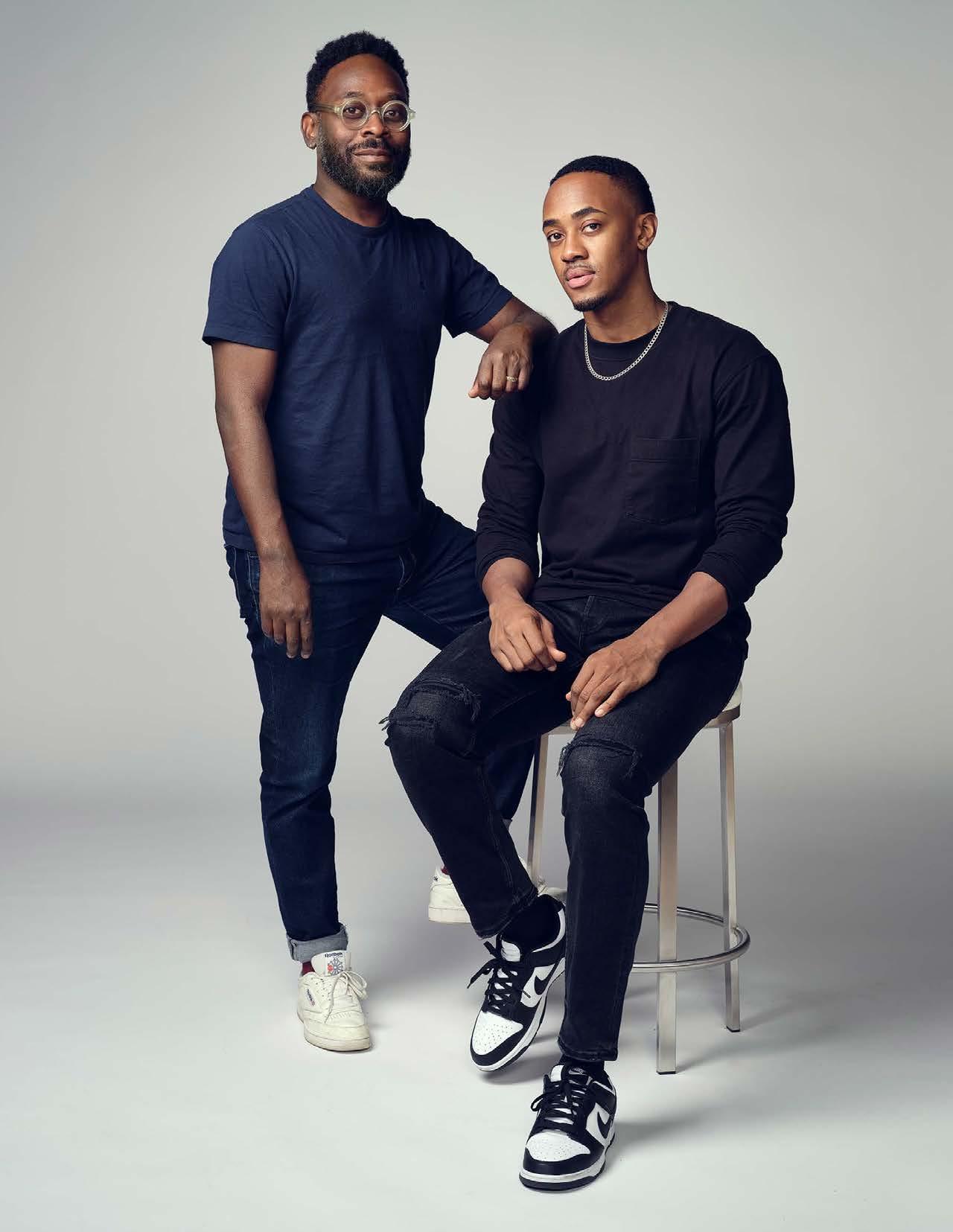
PHOTO BY JUSTIN BETTMAN
PLAYWRIGHT JAMES IJAMES & DIRECTOR SIDEEQ HEARD
GEFFEN PLAYHOUSE PRESENTS THE BROADWAY PRODUCTION OF
FAT HAM
WRITTEN BY JAMES IJAMES
ORIGINAL DIRECTION BY SAHEEM ALI
DIRECTED BY SIDEEQ HEARD
PRODUCED IN ASSOCIATION WITH NO GUARANTEES, PUBLIC THEATER PRODUCTIONS & RASHAD V. CHAMBERS
ASSOCIATE PRODUCER
MARCEL SPEARS
LIGHTING DESIGNER BRADLEY KING
ILLUSIONS DESIGNER SKYLAR FOX
FIGHT DIRECTOR
LISA KOPITSKY
SCENIC DESIGNER
MARUTI EVANS
WIG, HAIR & MAKEUP DESIGNER
DAVID H. PARKER
BROADWAY CHOREOGRAPHER DARRELL GRAND MOULTRIE
ORIGINATING PRODUCERS
COSTUME DESIGNER DOMINIQUE FAWN HALL
SOUND DESIGNER MIKAAL SULAIMAN
ASSOCIATE DIRECTOR
DAVID H. PARKER
ASSOCIATE CHOREOGRAPHER R ABDUR-RAHIM JACKSON
THE PUBLIC THEATER & NATIONAL BLACK THEATER
PRODUCTION STAGE MANAGER ALYSSA ESCALANTE
ORIGINAL CASTING DIRECTOR
KATE MURRAY, CSA
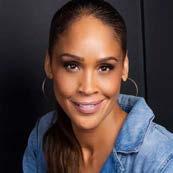
NIKKI CRAWFORD TEDRA

CHRIS HERBIE HOLLAND TIO

MARCEL SPEARS JUICY
CAST
ASSISTANT STAGE MANAGER LAUREN BUANGAN
CASTING DIRECTOR
PHYLLIS SCHURINGA, CSA
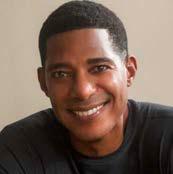
BILLY EUGENE JONES REV/PAP
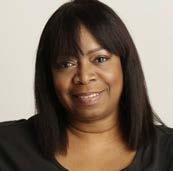
BENJA KAY THOMAS
RABBY

ADRIANNA MITCHELL OPAL

MATTHEW ELIJAH WEBB LARRY
8
ABOUT THE PLAY
OVERVIEW: Meet Juicy, a young, queer Black man with a Shakespearean-sized dilemma. When the ghost of his dead father shows up at his family’s BBQ wedding reception demanding his murder be avenged, does the poetic and sensitive Juicy have it in him to do the deed, or will he “to thine own self be true?” See what the New York Times calls “a hilarious yet profound tragedy smothered in comedy,” in this Pulitzer Prize–winning take on Hamlet, direct from Broadway to L.A
SETTING: A backyard in the southern U.S, present day.
RUNNING TIME: 95 minutes, no intermission.
AGE RECOMMENDATION: 12+
WARNINGS: Herbal Cigarette Smoke • Strobe Lighting Effects • Theatrical Haze
CONTENT ADVISORY: This production contains profanity.
ARTISTIC BIOGRAPHIES

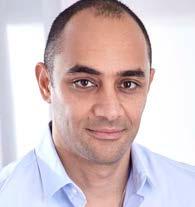
JAMES IJAMES Playwright (he/him)
James Ijames is a playwright, director, and educator. James is the recipient of the F. Otto Haas Award for an Emerging Artist, two Barrymore Awards for Outstanding Supporting Actor in a Play, two Barrymore Awards for Outstanding Direction of a Play, a Pew Fellowship for Playwriting, the Terrance McNally New Play Award, Kesselring Honorable Mention Prize, the Whiting Award, a 2019 Kesselring Prize for Kill Move Paradise, a 2020 and 2022 Steinberg Prize, and the 2022 Pulitzer Prize in Drama. He received a B.A. in Drama from Morehouse College in Atlanta, GA and a M.F.A. in Acting from Temple University in Philadelphia, PA. James is an Associate Professor of Theatre at Villanova University. He resides in South Philadelphia.
SAHEEM ALI Original Director (he/him)
Saheem is a proud immigrant from Kenya. He received a Tony Award nomination for directing the Pulitzer Prize–winning play Fat Ham on Broadway, an Obie Award for Sustained Excellence in Directing, Drama Desk and Lucille Lortel nominations for Fat Ham’s off-Broadway run at The Public Theater, where he serves as the Associate Artistic Director/Resident Director. His production of Merry Wives (Shakespeare in the Park) was recorded for PBS’s Great Performances and was the subject of the documentary Reopening Night on HBO. Productions include Buena Vista Social Club (Atlantic Theatre Company); Goddess (Berkeley Repertory Theatre); Nollywood Dreams (MCC Theater); Romeo y Julieta, Shipwreck, and Richard II (radio plays). Other productions: Fires in the Mirror (Signature Theatre), The Rolling Stone (Lincoln Center Theater), Passage (Soho Rep), Sugar in Our Wounds (Manhattan Theatre Club), Tartuffe (PlayMakers Repertory Company), Where Storms Are Born (Williamstown Theatre Festival), and Kill Move Paradise (National Black Theatre). He is a Usual Suspect at New York Theatre Workshop, a Sir John Gielgud SDCF Fellow, and a Shubert Fellow.

SIDEEQ HEARD Director (he/him)
Sideeq Heard is a multi-hyphenate actor and award-winning director. He was the Associate Director of the Tony Award–nominated Broadway production Fat Ham. Currently, he serves as the Associate Artistic Director at JAG Productions. He was awarded “Best Director” for the short film Here Is a Man at the 2023 Oscar-qualifying film festival Reel Sisters of the Diaspora. Recent directing credits include: Men Like Us, a new digital series created by Sideeq set to premiere Summer 2024; Rhyme Deferred by Kamilah Forbes at Howard University; The Waiting Room, an original play devised with Artreach Inc. premiering at the Eugene O’Neill Theater Center; A Curious Thing written by Jeremy O’Brian at JAG’s Theatre on the Hill festival; Word Becomes Flesh by Marc Bamahuti Joseph at NYU’s Freeplay Festival; a staged reading of Fat Ham at the American Airlines Theatre with Arts in the Armed Forces. He had the privilege of serving as Assistant Director to Carl Cofield on The Classical Theatre of Harlem’s award-winning adaptation of Twelfth Night, and Saheem Ali at The Public Theatre’s off-Broadway production of Fat Ham. B.F.A. Howard University, M.F.A. NYU Grad Acting. www.sideeqheard.com
ABOUT THIS PRODUCTION 9

HAMLET PLOT SUMMARY
William Shakespeare’s famous work Hamlet, Prince of Denmark has been adapted, retold, and reinvented countless ways. In playwright James Ijames’ own spin on Hamlet, Fat Ham, which won the 2022 Pulitzer Prize for Drama, he takes the outline of Hamlet and transposes it to the present day American South from the perspective of a queer, Black
ern man named Juicy.
Let’s dive into the main plot points of the tragedy of Hamlet, originally written around the year 1600. More than just a revenge play, Hamlet deals with questions about life and existence, sanity, love, death, and betrayal. It is one of the most quoted works of literature in the world, and since 1960 it has been translated into 75 languages (including Klingon).

THE ACTION BEGINS OTHERWORLDLY
As the play begins, Hamlet, Prince of Denmark, is visited by a mysterious ghost resembling his recently-deceased father the king. The ghost tells Hamlet that his father was murdered by Claudius, the king’s brother, who then took the throne and married Hamlet’s mother Gertrude. The ghost encourages Hamlet to avenge his father’s death by killing Claudius.


The task before Hamlet weighs heavily upon him. Is the ghost evil, trying to tempt him to do something that will send his soul to hell for eternity? Hamlet questions whether the specter is to be believed. Hamlet’s uncertainty, anguish, and grief are what makes the character so believable. He is arguably one of literature’s most psychologically complex characters. He is slow to take action, but when he does it is rash and violent. We can see this in the famous “curtain scene” when Hamlet kills Polonius.

HAMLET’S LOVE
Polonius’ daughter Ophelia is in love with Hamlet, but their relationship has broken down since Hamlet learned of his father’s death. Ophelia is instructed by Polonius and Laertes to spurn Hamlet’s advances.
Ultimately, Ophelia commits suicide as a result of Hamlet’s confusing behavior toward her and the death of her father.

10
south -
GUGU MBATHA-RAW & JUDE LAW, HAMLET, THE WEST END
PHOTO BY JOAN MARCUS
PAAPA ESSIEDU & EWART JAMES, HAMLET, RSC
PHOTO BY MANUEL HARLAN
GRANTHAM COLEMAN HAMLET, THE OLD GLOBE PHOTO BY JIM COX

A PLAY WITHIN A PLAY
In Act 3, Scene 2, Hamlet organizes actors to re-enact his father’s murder at the hands of Claudius in order to gauge Claudius’ reaction. He confronts his mother about his father’s murder and hears someone behind the arras. Believing it to be Claudius, Hamlet stabs the man with his sword. It transpires that he has actually killed Polonius.


TO BE OR NOT TO BE …
“To be, or not to be”, from Act 3, Scene 1, is one of the most widely known and quoted lines in modern English, and the speech has been referenced in numerous works of theatre, literature and music. In this iconic soliloquy Hamlet contemplates life, death, suicide, and the frailty of the human condition.
Scan the QR code to the left to hear
. Paapa Essiedu’s ‘To Be Or Not To Be’ speech in Royal Shakespeare’s Hamlet.


ROSENCRANTZ AND GUILDENSTERN
Claudius realizes that Hamlet is out to get him and professes that Hamlet is mad. Claudius arranges for Hamlet to be shipped to England with his former friends Rosencrantz and Guildenstern, who have been informing the king about Hamlet’s state of mind.
Claudius has secretly sent orders for Hamlet to be killed on arrival in England, but Hamlet escapes from the ship and swaps his death order for a letter ordering the deaths of Rosencrantz and Guildenstern.


TRAGIC ENDING
Laertes returns from France to avenge the death of Polonius, his father. Claudius plots with him to make Hamlet’s death appear accidental and encourages him to anoint his sword with poison. He also puts a cup of poison aside, in case the sword is unsuccessful.
In the action, the swords are swapped and Laertes is mortally wounded with the poisoned sword after striking Hamlet with it. He forgives Hamlet before he dies.
Gertrude dies by accidentally drinking the cup of poison. Hamlet stabs Claudius and forces him to drink the rest of the poisoned drink. Hamlet’s revenge is finally complete. In his dying moments, he bequeaths the throne to Fortinbras and prevents Horatio’s suicide by imploring him to stay alive to tell the tale.
SOURCE: “HAMLET PLOT SUMMARY” BY JAMIESON, LEE. APRIL 5, 2023. THOUGHT CO., HTTPS://WWW.THOUGHTCO.COM/WHAT-HAPPENS-IN-HAMLET-2984980
DANIEL RADCLIFFE & JOSHUA MCGUIRE ROSENCRANTZ & GUILDENSTERN ARE DEAD, THE WEST END PHOTO BY MANUEL HARLAN
ROSS BESCHLER & ZAINAB JAH HAMLET, WILMA THEATER
PHOTO COURTESY OF WILMA THEATER
MAXINE PEAKE HAMLET, ROYAL EXCHANGE THEATER
PHOTO BY JONATHAN KEENAN
ANASTASIA HILLE & BENEDICT CUMBERBATCH, HAMLET, THE BARBICAN PHOTO BY JOHAN PERSSON
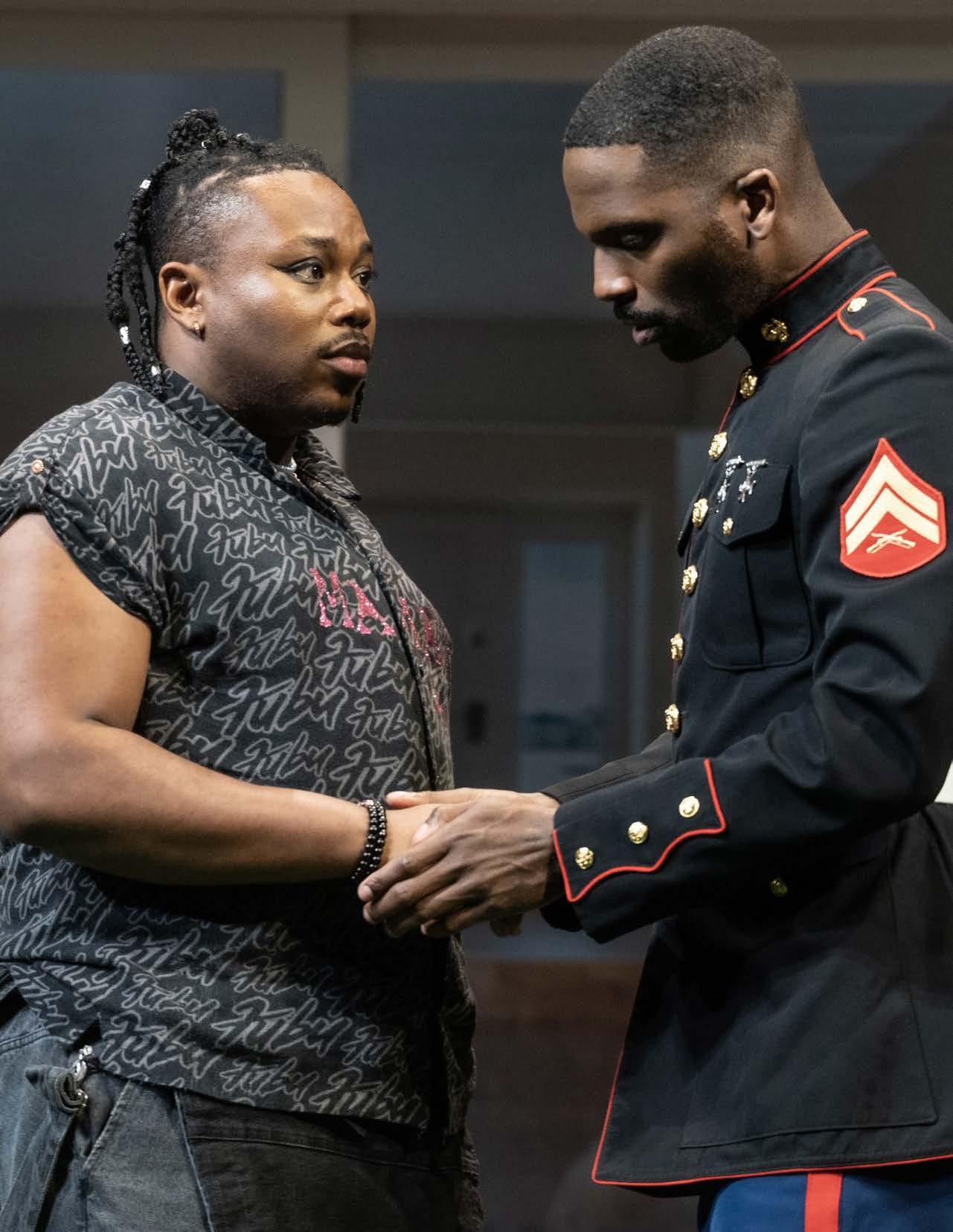
12
MARCEL SPEARS AS JUICY AND CALVIN LEON SMITH AS LARRY
PHOTO BY JOAN MARCUS
BLACK QUEER HISTORY IS AMERICAN HISTORY
BY MYESHIA PRICE
In fourth grade, I remember seeing Maya Angelou on my television for the first time. Angelou was a fierce advocate for the LGBTQIA+ community at a time when few people were, once famously reciting, “I am gay. I am lesbian. I am Black. I am white. I am Native American. I am Christian. I am Jew. I am Muslim” to a crowd of queer people in Florida in 1996. While she wasn’t a part of the queer community, I recall feeling a sense of kinship towards her. The feeling of hearing her powerful voice reciting her poem “And Still I Rise” with the image of thousands of Black students participating in a graduation ceremony had a profound impact on me and my ability to see myself as not only one of those graduates, but also someone who could one day contribute to and celebrate the rich history of Black people.
Growing up and exploring my identity further, I never once saw a Black LGBTQIA+ person like me represented in my history books. As a matter of fact, I rarely learned about Black historical figures outside of the common heavy hitters such as Martin Luther King Jr., Malcolm X, Sojourner Truth, or Harriet Tubman. While they are monumentally important to our history as Black Americans, they also represent very specific factions of our struggle for justice and liberation. When I first discovered Angelou, I immediately started reading as much of her work as I could—albeit with a dictionary on hand—and learned how fortitude is often born from our most painful periods. It wasn’t until much later, in graduate school, that I was introduced to the works of LGBTQIA+ authors for the very first time—writers like Audre Lorde and bell hooks. Their radically inspiring approach to Black queerness and feminist theory resonated with me on a much deeper level: How, as Lorde once wrote, “caring for myself
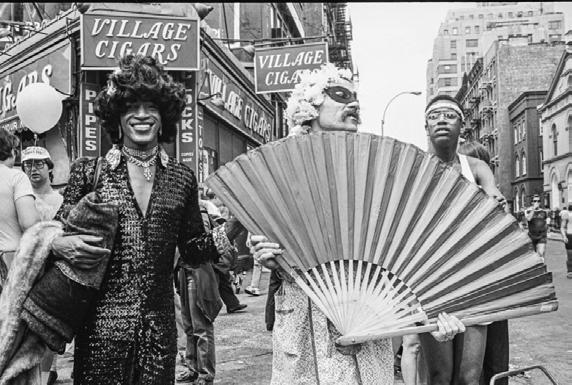
is not self-indulgence, it is self-preservation, and that is an act of political warfare;” how the struggles to end racism, sexism, homophobia, and transphobia are inextricably intertwined. Reading their words instilled a sense of pride in me, particularly as someone who wrote more than I spoke. These collective experiences throughout my life made me want to continue learning and pursue a career in research, so I could help expand public knowledge on important topics impacting people like me.
As the Director of Research Science at The Trevor Project, my work focuses on adolescent gender and sexuality, and reducing LGBTQIA+ youth mental health disparities. My research particularly looks at the role that protective factors—such as supportive and affirming schools or LGBTQIA+ role models and representation—have on reducing this risk. Every student should experience moments of feeling seen and represented in school. When we see ourselves reflected in books or in the media, it opens up a world of possibilities that we may have never known were otherwise possible and inspires a new generation of thought-leaders.
Unfortunately, politicians are attempting to strip that hope by censoring curriculums and banning books related to both Black and LGBTQIA+ topics. In 2023 alone, more than 400 anti-LGBTQIA+ bills have been introduced across the country— most of which target transgender and nonbinary young people—with more popping up each day. We know that LGBTQIA+ young people are listening as their rights are being debated on the national stage. For LGBTQIA+ youth of color, these types of bills can have a compounding negative impact on their mental health and well-being—they force not just one aspect, but multiple aspects, of their identities into the shadows. Nearly 7 in 10 Black LGBTQIA+ youth say debates around state laws restricting the rights of LGBTQIA+ young people have negatively impacted their mental health, and 1 in 5 also reported experiencing cyberbullying or online harassment as a result of these policies and debates in the last year.
Nowhere is this more apparent than in Florida. In March 2022, Florida Gov. Ron DeSantis signed what became commonly known as the “Don’t Say Gay” bill, banning classroom instruction on sexual orientation and gender identity from kindergarten to third grade or “in a manner that is not age-appropriate or developmentally appropriate for students in accordance with state standards.” The very next month, he signed the originally-named Stop the Wrongs to Our Kids and Employees (WOKE) Act, which prohibits classroom instruction or diversity training in workplaces that imply a person is privileged or oppressed based on their
THEMES & TOPICS 13
AMERICAN GAY LIBERATION ACTIVIST MARSHA P JOHNSON (LEFT) IN A CROWD
DURING THE PRIDE MARCH (LATER THE LGBT PRIDE MARCH) IN NEW YORK
ON JUNE 27, 1982
PHOTO BY BARBARA ALPER—GETTY IMAGES
identity. “Don’t Say Gay” has had a chilling effect, discouraging teachers at all grade levels from ever discussing the LGBTQIA+ community, offering supportive resources, or displaying symbols of Pride in their classrooms out of fear of retribution. In fact, one bill has been introduced that would extend the ban on LGBTQIA+ related classroom instruction through ninth grade, and prohibit students and teachers from respecting pronouns or personal titles that don’t correspond with one’s sex assigned at birth through twelfth grade. In a similar unwarranted effort to “protect” students, the state of Florida decided in February 2023 to reject the College Board’s new AP African American Studies course on the grounds that it “lacks educational value” and equates to “indoctrination.” Particularly, the Florida Department of Education took issue with the course including lessons on intersectionality and Black queer studies. It’s clear that Florida officials view public education on marginalized identities and ongoing cycles of oppression as threats to their power and their ability to perpetuate these cycles.
This type of extreme government overreach and censorship comes at a time when new CDC data found suicide rates significantly increased among Black young people between 2018 and 2021. Among Black LGBTQIA+ youth, The Trevor Project’s research found that 19% reported attempting suicide in the past year compared to 12% of their white LGBTQIA+ peers. And when broken down by gender identity, our latest study shows that 1 in 4 Black transgender and nonbinary youth reported a suicide attempt in the past year—more than double the rate of suicide attempts compared to Black cisgender young members of the queer community. This staggering data further emphasizes the importance of applying an intersectional lens to understand the world around us and the disparities that exist across our most marginalized and vulnerable communities.
My Blackness is everything to me—it shapes how I perceive the world and how the world perceives me. But as a queer nonbinary Black person that holds multiple marginalized identities, the stakes are even higher for me. I am hyper-conscious of how I present myself in predominantly white spaces and often feel misunderstood or invalidated in heteronormative spaces. It’s a nuanced balancing act that I have to perform every day, and is a direct result of my intersecting identities. To reject the concept of intersectionality is denying my own lived experiences, and that of so many other Black LGBTQIA+ people who have to navigate a world that so often causes them harm.
Black LGBTQIA+ history is complex, rich, and, yes, traumatic. It’s the harsh reality of not only our nation’s dark past, but the current state of society. Attempting to censor classrooms from teaching about the contributions of Black LGBTQIA+ people will erase critical decades of history—from
Bayard Rustin’s leadership in the Civil Rights Movement and Marsha P. Johnson’s role in the Stonewall Riots, to the timeless literary works of James Baldwin. Innovative writers such as Langston Hughes, Countee Cullen, and Alain Locke and entertainers Ethel Waters, Bessie Smith, and Ma Rainey defined the Harlem Renaissance and paved the way for Beyoncé’s Renaissance. In the words of African American literary critic Henry Louis Gates Jr., the Harlem Renaissance “was surely as gay as it was Black.”
Fast forward to today, and we have press secretary Karine Jean-Pierre, the first Black woman and openly LGBTQIA+ person to hold the position, and activists such as Black Lives Matter co-founder Patrisse Cullors inspiring a new generation of Black LGBTQIA+ leaders. Black, queer history is American history, and it has shaped nearly every aspect of our culture as we know it today.
Students shouldn’t have to wait until they potentially find themselves in a college classroom to learn about people with a shared identity. Black history, which is already primarily limited to our experiences in enslavement and segregation, must stress that Black people are not a monolith in order to fully embody the diversity that is the Black experience in America. While our shared experiences around racism and systemic oppression bond us, our myriad of identities cannot simply be packaged into a one-stop-shop curriculum. LGBTQIA+ students—like all students—deserve to have their history and experiences reflected in their education.
SOURCE: “BLACK QUEER HISTORY IS AMERICAN HISTORY” TIME MAGAZINE BY MYESHIA PRICE, MARCH 16, 2023 HTTPS://TIME.COM/6263354/ BLACK-LGBTQ-HISTORY-REPRESENTATION/
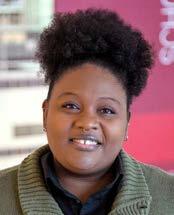
The Trevor Project is the leading Myeshia Price, Ph.D. (she/they) is the Director of Research Science at The Trevor Project. Price has more than 15 years of experience in adolescent public health research, with a focus on sexuality, gender, and LGBTQIA+ youth from an intersectional perspective

The Trevor Project is the leading suicide prevention & crisis intervention nonprofit organization for LGBTQ young people. They provide information & support to LGBTQ young people 24/7, all year round.
https://www.thetrevorproject.org
THEMES & TOPICS 14
DOUBTING SHAKESPEARE’S IDENTITY ISN’T A . CONSPIRACY THEORY

EXCERPT
BY ELIZABETH WINKLER
The Shakespeare authorship question—the theory that William Shakespeare might not have written the works published under his name—is the most horrible, vexed, unspeakable subject in the history of English literature.
Among Shakespeare scholars, even the phrase “Shakespeare authorship question” elicits contempt—eye-rolling, name-calling, mudslinging. If you raise it casually in a social setting, someone might chastise you as though you’ve uttered a deeply offensive profanity. Someone else might get up and leave the room. Tears may be shed. A whip may be produced. You will be punished, which is to say, educated. Because it is obscene to suggest that the god of English literature might be a false god. It is heresy.
This is curious, because many of our greatest writers and thinkers have suspected that the name was indeed a pseudonym for a concealed author. “I am ‘sort of’ haunted by the conviction that the divine William is the biggest and most successful fraud ever practiced on a patient world,” wrote Henry James.
“We all know how much mythus there is in the Shakespeare question as it stands to-day,” Walt Whitman noted. Whitman, the poet of democracy, was no snob, but he was convinced that there was another mind behind the plays.
Mark Twain agreed. “So far as anybody actually knows and can prove, Shakespeare of Stratford-on-Avon never wrote a play in his life,” he wrote. “All the rest of his vast history, as furnished by the biographers, is built up, course upon course, of guesses, inferences, theories, conjectures—an Eiffel Tower of artificialities rising sky-high.”
For Vladimir Nabokov, the mystery inspired a poem. “You easily, regretlessly [SIC] relinquished the laurels… concealing for all time your monstrous genius beneath a mask,” he wrote. “Reveal yourself, god of iambic thunder, you hundred-mouthed, unthinkably great bard!”
I’ve come to see the authorship question as a kind of metaphor for the problem of history—of how we know what we think we know about the past. It’s also a metaphor for the problem of authority—of who has the authority to determine the truth about the past.
Read the rest of the article at https://lithub.com/doubting-shakespeares-identity-isnt-a-conspiracy-theory/
SOURCE: “ELIZABETH WINKLER ARGUES THE MYSTERY BEHIND THE GOD OF IAMBIC THUNDER IS PART OF THE THRILL.” BY ELIZABETH WINKER, 2023. HTTPS:// LITHUB.COM/DOUBTING-SHAKESPEARES-IDENTITY-ISNT-A-CONSPIRACY-THEORY/ADAPTED FROM SHAKESPEARE WAS A WOMAN AND OTHER HERESIES: HOW DOUBTING THE BARD BECAME THE BIGGEST TABOO IN LITERATURE BY ELIZABETH WINKLER.


SCAN the QR code to the left to ask Shakespeare scholars what their Shakes hot take is. The last one is the best!
#academia #shakespeare #hottake #academics
15 THEMES & TOPICS
WILLIAM SHAKESPEARE STREET ART, PAINTED BY JAMES COCHRAN, AKA JIMMY C.
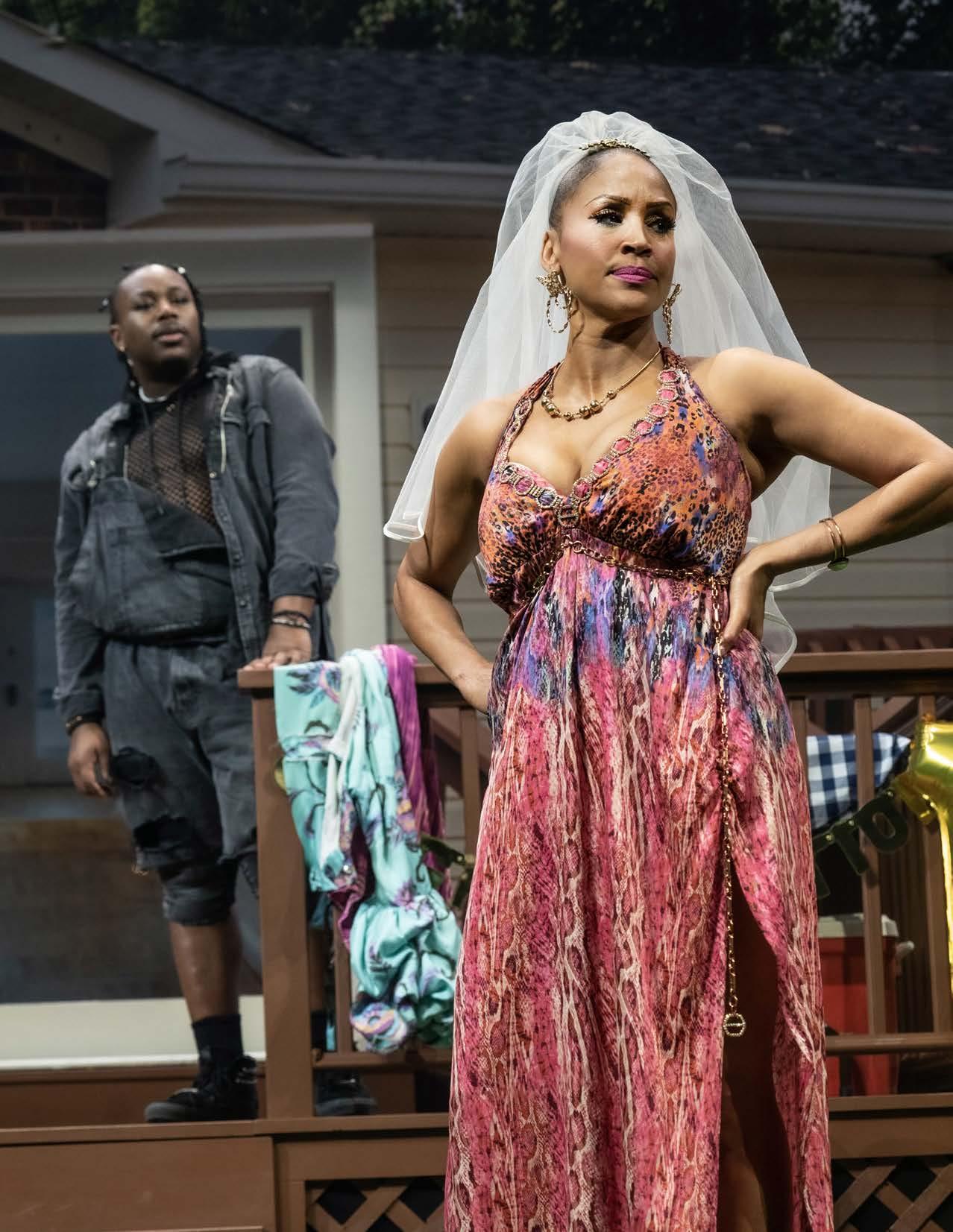
16
MARCEL SPEARS AS JUICY AND NIKKI CRAWFORD AS TEDRA
PHOTO BY JOAN MARCUS
FROM PLANTATION TO BABECUE JOINT: THE BLACK CONTRIBUTION TO AMERICAN BARBECUE
EXCERPT BY JESSICA B. HARRIS
“Night before the barbecues, I used to stay up all night cooking and basting the meats with barbecue sauce. It was made of vinegar, black and red pepper, salt, butter, a little sage, coriander, basil, onion, and garlic. Some folks drop a little sugar in it. On a long pronged stick, I wrapped a soft rag or cotton for a swab, and all night long, I swabbed the meat until it dripped into the fire. The drippings changed the smoke into seasoned fumes that smoked the meat. We turned the meat over and swabbed it that way all night long until it oozed seasoning and was baked all through.”
Thus recalled a former enslaved African American whose narrative was recorded by the WPA (Work Projects Administration) in the 1930s—a collection of 2,300 first person accounts of slavery. He spoke of an art inextricably interwoven with American cuisine—since our country’s founding & long before—an art every bit as near & dear to our hearts today: barbecue.
Simply defined, barbecue is meat slow-cooked over direct or indirect flame with wood smoke providing its flavor—and its soul. But there’s nothing simple about barbecue—not even about the word, which can be used as a verb, an adjective, or a noun. As a verb, barbecue means to cook meat low and slow over or next to a smoky fire, and more generally to cook meat outdoors. As an adjective, barbecue describes both a method and style of cooking. When used as a noun, its complexities become even more apparent, with at least three different meanings:
• A food cooked with fire and wood smoke
• An outdoor event or celebration built around food cooked with fire
• The device over which such cooking is done—the so-called barbecue grill
And that’s before we get to regional barbecue, because in Texas, the word probably means brisket, in Memphis, ribs, in North Carolina, pulled pork, & in Salinas, California, grilled oysters.

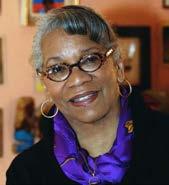
JESSICA B. HARRIS is the author of 12 cookbooks documenting the food of the African Diaspora. She is the 2020 James Beard Lifetime Achievement Award recipient. Her latest book is Vintage Postcards from the African World (Uni. Press of Mississippi, May 2020).
SOURCE: HARRIS, J. B. (N.D.). FROM PLANTATION TO BARBECUE JOINT: THE BLACK CONTRIBUTION TO AMERICAN BARBECUE. BARBECUE BIBLE. RETRIEVED FEBRUARY 14, 2024, FROM HTTPS://BARBECUEBIBLE.COM/2020/08/07/BLACKCONTRIBUTION-TO-AMERICAN-BARBECUE/
THEMES & TOPICS
HENRY PERRY, “THE FATHER OF KANSAS CITY BARBECUE.”
17
PHOTO COURTESY OF BARBECUEBIBLE.COM
HOW TO BETTER UNDERSTAND SHAKESPEARE’S WORDS
By DUNCAN FEWIS
For many, language is the biggest barrier to understanding Shakespeare. Perfectly competent performers can be paralyzed with fear when they see bizarre words like “Methinks” and “Peradventure” – something we call Shakespearaphobia.
Here are modern translations of the top 10 most common Shakespearean words and phrases:
THEE, THOU, THY AND THINE (YOU AND YOUR) It’s a common myth that Shakespeare never uses the words “you” and “your” – actually, these words are commonplace in his plays. However, he also uses the words “thee / thou” instead of “you” and the word “thy / thine” instead of “your”. Sometimes he uses both “you” and “thy” in the same speech. This is simply because in Tudor England the older generation said “thee” and “thy” to denote a status or reverence for authority. Therefore when addressing a king the older “thou” and “thy” would be used, leaving the newer “you” and “your” for more informal occasions. Soon after Shakespeare’s lifetime, the older form passed away!
ART (ARE) The same is true of “art”, meaning “are”. So a sentence beginning “thou art” simply means “You are”.
AY (YES) “Ay” simply means “yes”. So, “Ay, My Lady” simply means “Yes, My Lady.”
WOULD (WISH) Although the word “wish” does appear in Shakespeare, like when Romeo says “I wish I were a cheek upon that hand,” we often find “would” used instead. For example, “I would I were …” means “I wish I were…”
GIVE ME LEAVE TO (ALLOW ME TO) “To give me leave to”, simply means “To allow me to”.
ALAS (UNFORTUNATELY) “Alas” is a very common word that isn’t used today. It simply means “unfortunately”, but in modern English, there isn’t an exact equivalent.
ADIEU (GOODBYE ) “Adieu” simply means “Goodbye”.
SIRRAH (SIR) “Sirrah” means “Sir” or “Mister”.
-ETH Sometimes the endings of Shakespearian words sound alien even though the root of the word is familiar. For example “speaketh” simply means “speak” and “sayeth” means “say”.
DON’T, DO, AND DID A key absence from Shakespearean English is “don’t”. This word simply wasn’t around then. So, if you said “don’t be afraid” to a friend in Tudor England, you would have said, “be not afeard.” Where today we would say
“don’t hurt me,” Shakespeare would have said, “hurt me not.” The words “do” and “did” were also uncommon, so rather than saying “what did he look like?” Shakespeare would have said, “what looked he like?” And instead of “did she stay long?” Shakespeare would have said, “stayed she long?” This difference accounts for the unfamiliar word order in some Shakespearian sentences.
It is important to note that when Shakespeare was alive, language was in a state of flux and many modern words were being integrated into the language for the first time. Shakespeare himself coined many new words and phrases. Shakespeare’s language is, therefore, a mixture of the old and the new.
SOURCE: “HOW TO BETTER UNDERSTAND SHAKESPEARE’S WORDS”. BY FEWINS, DUNCAN. (2023, APRIL 5) HTTPS://WWW.THOUGHTCO.COM/ UNDERSTAND-SHAKESPEARE-WORDS-2985145

SHAKESPEARE’S POETRY
A quick peek into the rhythm of Shakespeare’s words reveals a poet deeply rooted in the way people spoke in his time — and still speak today. Why did Shakespeare choose iambic pentameter? It’s been said that iambic pentameter was easy for his actors to memorize and for the audience to understand because it’s naturally suited to the English language. But there might be another reason.
The next time you’re in a heightened emotional situation,like the ones that make Shakespeare’s characters burst into verse, put your hand over the left side of your chest.
What do you feel? That’s your heart beating in iambs.
Da duhm, da duhm, da duhm, da duhm, da duhm.
Shakespeare’s most poetic lines don’t just talk about . matters of the heart, they follow its rhythm.

Scan the QR Code to the right to see Paapa Essiedu explore the soliloquy from Hamlet, Act 1 Scene 2 of at the Royal Shakespeare Company’s Learning Zone.
18 THEMES & TOPICS
PAAPA ESSIEDU HAMLET, RSC PHOTO BY MANUEL HARLAN

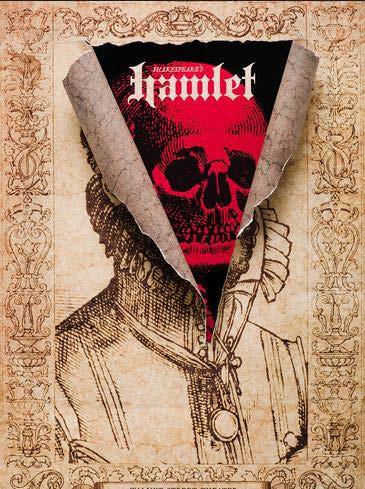


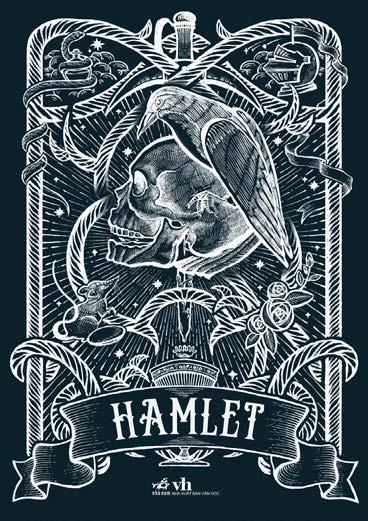




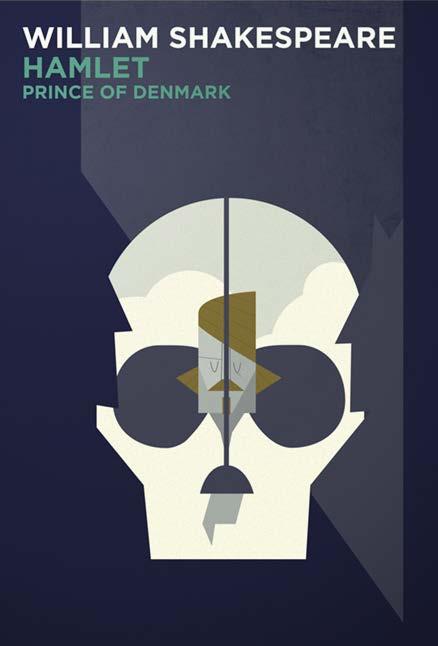
DISCUSSION: Look at the poster designs for productions or covers of Hamlet on this page & the poster art for Fat Ham on the cover. What elements do they have in common? How do they differ? How would you design a poster for Fat Ham ?

 MARCEL SPEARS AS JUICY AND ADRIANNA MITCHELL AS OPAL
PHOTO BY JOAN MARCUS
MARCEL SPEARS AS JUICY AND ADRIANNA MITCHELL AS OPAL
PHOTO BY JOAN MARCUS
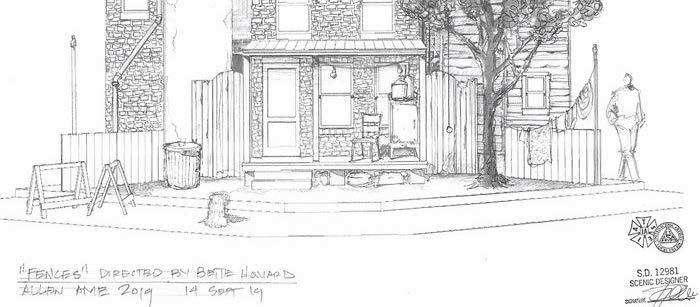
ACTIVITY: DESIGN A SET
ACTIVITY TIME: up to 30 minutes, which can be completed before or after you’ve seen the play.
The setting of a play can be vitally important to the themes, plot, and even to a characters’ motivation. Some settings are so integral, they even take on a life of their own — and often, become a character itself. The setting of a play allows an audience to become comfortable with the context of the story, making it specific to the moment, and immerses the viewer into a new world, and potentially, a new way of thinking.
In this activity, you will use the playwright James Ijames’s description of the setting from the script of FAT HAM to design & sketch the setting of the play.
FROM THE SCRIPT
SETTINGS
Where: A house in North Carolina. Could also be Virginia, or Maryland or Tennessee. It is not Mississippi, or Alabama or Florida. That’s a different thing all together.
ACTIVITY TIME: 1 hour+, can be completed after you’ve seen the play.
Time: The American south, to me, exist in a kind of liminal space between the past and the present with an aspirational relationship to the future that is contingent to your history living in the south. All that to say...I’m writing this play from inside the second decade of the 21st century. This world aesthetically sits anywhere in the 4-6 decades proceeding the current moment.
The backyard celebration; a house, backyard, maybe a tent, . maybe a trampoline.
The house is one of those ranch style houses built in the seventies. Glass patio doors open onto the backyard. The glass doors offer us a window into the interior of the house. Sort of like a proscenium arch to the interior life of the characters.
The space is being decorated for what appears to be a wedding reception...but the most last minute holly hobby hodge podge wedding reception you can imagine. These balloons are from a birthday party, the streamers are from a baby shower. Christmas lights. It’s a chaotic mass of celebratory kitsch.
21
ACTIVITY: DESIGN A SET
CREATE YOUR DESIGN

CONSIDER:
What tools will you use to sketch? (Pencil, marker or snap a pic of the area below to make your design digitally.)
How can you personalize the design, based on Ijames’s description, but using your own lived experiences to inspire your creation? What research can you do to help inform your design? What needs to happen on stage during the action of the play?

SKETCH: Use the area below sketch your preliminary design.
DESIGNED BY:
SHOW: FAT HAM


22
CUT ALONG THIS LINE TO REMOVE ACTIVITY FROM BOOKLET
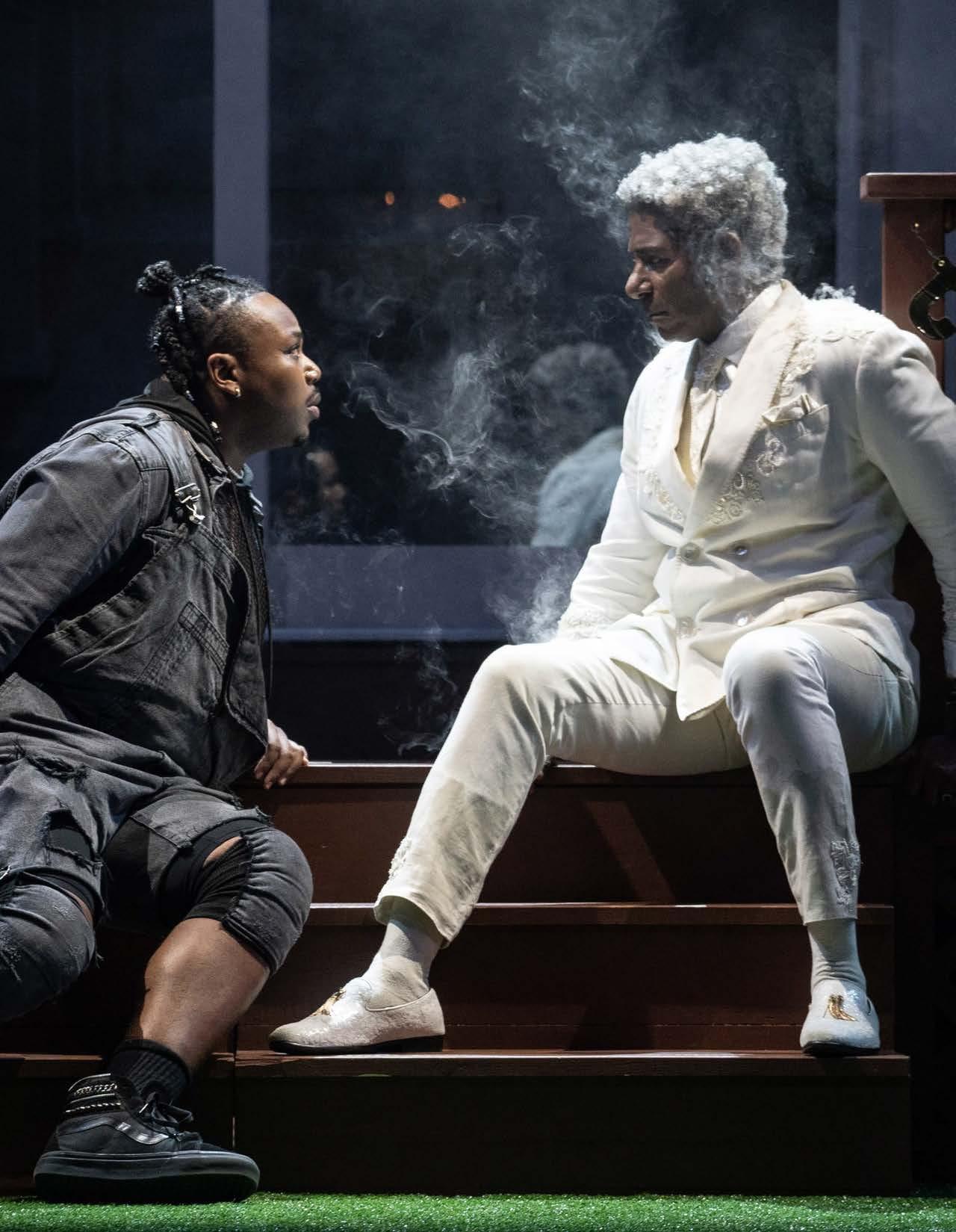
23
MARCEL SPEARS AS JUICY AND BILLY EUGENE JONES AS PAP
PHOTO BY JOAN MARCUS

POST-SHOW DISCUSSION QUESTIONS
Depending on the time available and your participants’ interests, guide them to respond to the suggested below. Encourage everyone to participate, and respect differing opinions. Individuals can share their thoughts with a partner or in a small group. Ask for several volunteers to share their groups’ answers with the larger group.
• What images and moments from the performance stood out or resonated with you? What was meaningful, stimulating, surprising, evocative, memorable, interesting, exciting, striking, touching, challenging, compelling, delightful, different, and unique?
• How did the set, props, costumes, and music contribute to the impact of the show?
• Overall, how did you feel while watching this show? Engaged? Conflicted? Amused? Inspired? Provoked? Put off? What made you feel this way?
• How familiar were you with the story of Hamlet: Prince of Denmark, before seeing Fat Ham? Did knowing anything about Hamlet help your enjoyment, or understanding of the play? Why or Why not?
• If you are familiar with the play Hamlet, or after reading the plot breakdown on pages 10 & 11, which elements from Hamlet did you see manifested, or referenced, in IJames’ play Fat Ham? Provide examples from each text to support your argument.
• What is your reaction to the end of the play? What did you find interesting or challenging about how James IJames ended the story in Fat Ham?
• Have you ever been to a family function, like a Wedding, Wake, or BBQ, and everything went terribly wrong? Write a short monologue or scene about it from the point of the food.
• How would you describe each character’s inner life in the play? Are they conflicted? If so, how, and why?
• Did you identify or empathize with any of the characters? If so, which character(s) and why? If not, why not?
• What did you find most moving about the play?
• What did you appreciate most about the performances by the actors?
• Familiar with Shakespeare’s plays? Choose one of the Bard’s other shows and see if you can retell the story, set at a family function; similar to Hamlet at a BBQ, or…
24
STUDENT MATINEE AT GEFFEN PLAYHOUSE PHOTO BY JEFF LORCH
THEMES & TOPICS
ADDITIONAL RESOURCES
BE EDUCATED on Hamlet with The Hamlet Podcast, on Spotify at http://tinyurl.com/yn6kh7vr
CALL the National Drug Hotline at 1-844-289-0879 if you or a family member needs help.
DISCOVER more about the storytellers who are remaking the American Theater at www. harpersbazaar.com/culture/film-tv/a45830148/black-storytellers-remaking-american-theaterinterview-2023.
EDUCATE YOURSELF about the Trevor Project at https://www.thetrevorproject.org/
EMBRACE Kehinde Wiley’s Reclamation of Black Lives at http://tinyurl.com/ybc5b2tv
END homelessness within the Black Trans population at https://www.blacktransliberation.com
FOLLOW Jessica B. Harris at www.africooks.com for Literary Works & Beyond and follow Jessica on Instagram: @drjessicabharris
KNOW about the different Styles of Regional BBQ in The US at http://tinyurl.com/24r7sdps
LEARN Why Barbecue Is An Essential Part of Black History at http://tinyurl.com/t4nh7xkp
LISTEN to How Toxic Masculinity Manifested in Hip Hop & the Black Community at http://tinyurl. com/yvbe7ra6
REGISTER to vote at www.registertovote.ca.gov
TEXT or CALL “988” nationwide to connect directly to the Suicide & Crisis Lifeline.
UNITE with others through the Black Men Flower Project at https://thetriibe.com/2023/06/ black-men-flower-project-is-giving-black-chicago-men-their-flowers-literally/.
WATCH Out, Proud & Southern: Dyllón Burnside’s Story | PRIDELAND at http://tinyurl. com/4c8r9swm
25 THEMES & TOPICS
GET LIT: POTUS
This season Geffen Playhouse Education & Community Engagement has partnered with the Los Angeles-based nonprofit Get Lit.
Get Lit ignites student engagement, literacy, and young voices around the globe using the power of spoken word, technology, and community.
Every Study Guide this season will spotlight written response pieces to Geffen Playhouse Gil Cates productions, crafted by students enrolled in Get Lit Players literacy programs. Get Lit receives complimentary tickets to all Geffen Playhouse Gil Cates shows as part of our Lights Up & Access Community Engagement Programs.
The poem “(Woman)” written by JG on the following page is in response to the Geffen Playhouse’s production of Selina Fillinger’s POTUS: OR, BEHIND EVERY GREAT DUMBASS ARE SEVEN WOMEN TRYING TO KEEP HIM ALIVE, presented January 17 – February 25, 2024.
The next Get Lit written response will be to James IJames’ Fat Ham and will be shared in the Study Guide for Geffen’s upcoming show, Tiny Father, by Mike Lew in June, 2024.

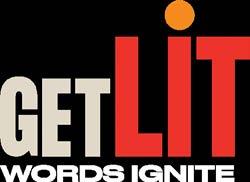
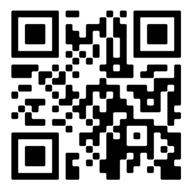
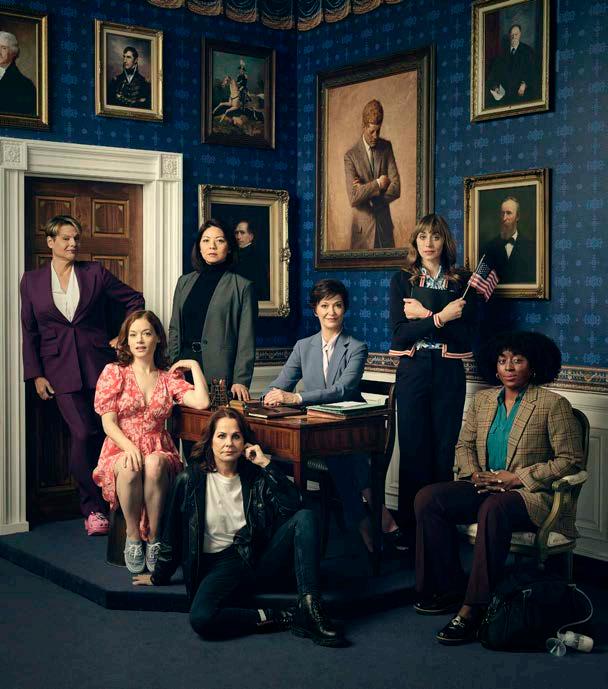
Get Lit - Words Ignite is striving to change LA’s literacy rate & arts scene into a grassroots wonderland, one teen poet at a time. Through classic and slam poetry, using the power of Spoken Word, technology, and community they ignite a love of words and introduce teens to great works of literature and poetry. They respond with their own original poems and perform them all over the world.
Ultimately, Get Lit’s goal is to improve students’ writing and speaking skills, which will benefit them in university and beyond. Through their program they also develop self-confidence and unbreakable friendships and collaborations
Get Lit – Words Ignite was founded in 2006 in Los Angeles by Diane Luby Lane to increase literacy, empower youth, and energize communities through poetry. Get Lit began with a show that Diane toured with internationally celebrated poet Jimmy Santiago Baca, turning it into a curriculum which transformed youth into poets, leaders, and scholars.
SCAN the QR code to the left to check out Get Lit’s performances, interviews and behind-the-scenes tomfoolery at their Youtube page. Learn more or get involved here: https://www.Getlit.Org
26
COMMUNITY ENGAGEMENT SPOTLIGHT
ALEXANDRA BILLINGS, CELESTE DEN, LAUREN BLUMENFELD, JANE LEVY, SHANNON COCHRAN, ITO AGHAYERE, DEIRDRE LOVEJOY
PHOTO BY JEFF LORCH
(Woman)
by JG
woe is not Woman without a man you see, Woman wears tight, tight turtlenecks and sometimes imagines treating her life like her hair– masculine, cut sharp, short (but)
Woman will always keep laughing at life, because what other choice does she have?
you see, Woman, she lives to love to love, to hold her Lover (but)
Woman also has to hold everyone else, everyone who is not Lover, the boys clinging to her fingers like leeches, climbing her arms like jungle gyms, hiding beneath her perfectly manicured nails like rats in a storm, the boys who note how unattractive they find the very muscles which carry them (but)
Woman always has her other hand free, just as strong, (but) clean and soft to hold Lover’s, gentle hands for gentle Lover, who squeezes tight, tight so not even a bug could crawl between Us, who is the reason Woman loves woman-ness (but)
you see, being a woman is hard. on one hand, Woman is ravenous, eager, loves to love to love Lover (but), on the other, Woman is empty, is full mostly of tapeworms, is perpetually ducking vultures (but)
Woman doesn’t mind. Woman will always live love laugh between parentheses, because what other choice does she have?
JG author (she/her)
JG is a valley girl through and through. A huge fan of radical love and reality TV, JG loves to learn languages and tell stories through all forms of art from painting to poetry to people watching. She’s been published in school papers and debated competitively since middle school. JG believes the path to peace is paved with critical thinking and tolerance.
27
COMMUNITY ENGAGEMENT SPOTLIGHT

AN INTERVIEW WITH SPENCER DOUGHTIE PERSONNEL PROFILE
What is your position and how long have you been at the Geffen?
My position at the Geffen is Lighting and Projections Supervisor. I am coming up on 2 years here.
What educational, artistic, and professional experiences led to you working at the Geffen?
I have a master’s degree from UCSC in lighting and projection design. When I moved back home to LA after school, I saw the job opening and thought it must have been made for me!
What are your primary responsibilities as Lighting and Projections Supervisor?
I am responsible for implementing the lighting and projection designs for all the shows at the Geffen. The nuts and bolts of that include: renting lighting fixtures, interfacing with designers, running crews of electricians to hang/circuit/focus lights, supporting the designer through tech and previews, and maintaining the integrity of their design through the run of the show.
What key skills and disposition does a Lighting and Projections Supervisor need to possess in this day and age?
Skills-wise you need to possess a deep understanding of how lighting and projection systems are constructed: Control devices and protocols, signal flow, cable-types, fixture types. As far as disposition goes, it helps to be even-keel. There’s a lot of moving parts in putting up a show and staying on top of them without losing your head will take you far in this industry.
Was there a pivotal moment when you realized you wanted a life in the arts or did it occur incrementally?
I’ve been doing theater all my life. I started as an actor, and found myself working in tech during college.
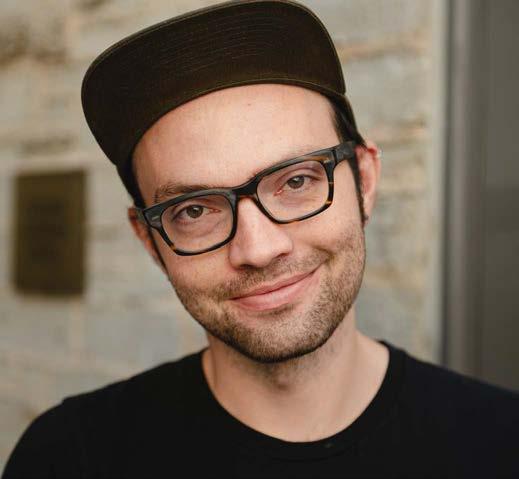
What do you find most challenging about your work?
My biggest challenge is logistics. Coordinating with scenic, sound, and stage management to make sure I can get my job done without interfering in theirs can be difficult.
What do you find most rewarding?
The biggest reward is the flip side of the logistics coin. The collaboration between the different departments to put together a fully realized production is extremely satisfying. Whether I’m working with sound to make sure lighting cues fire at the same time as sound cues, or I’m working with scenic to imbed LED strips into the set. Getting to work with such a rad group of theater professionals is the best!
What was one of your favorite shows to work on?
I really loved working on Black Cypress Bayou! The lighting designer, Donny Jackson, and I worked together really well. The set is gorgeous, and the story is dark and funny in all the right ways.
28
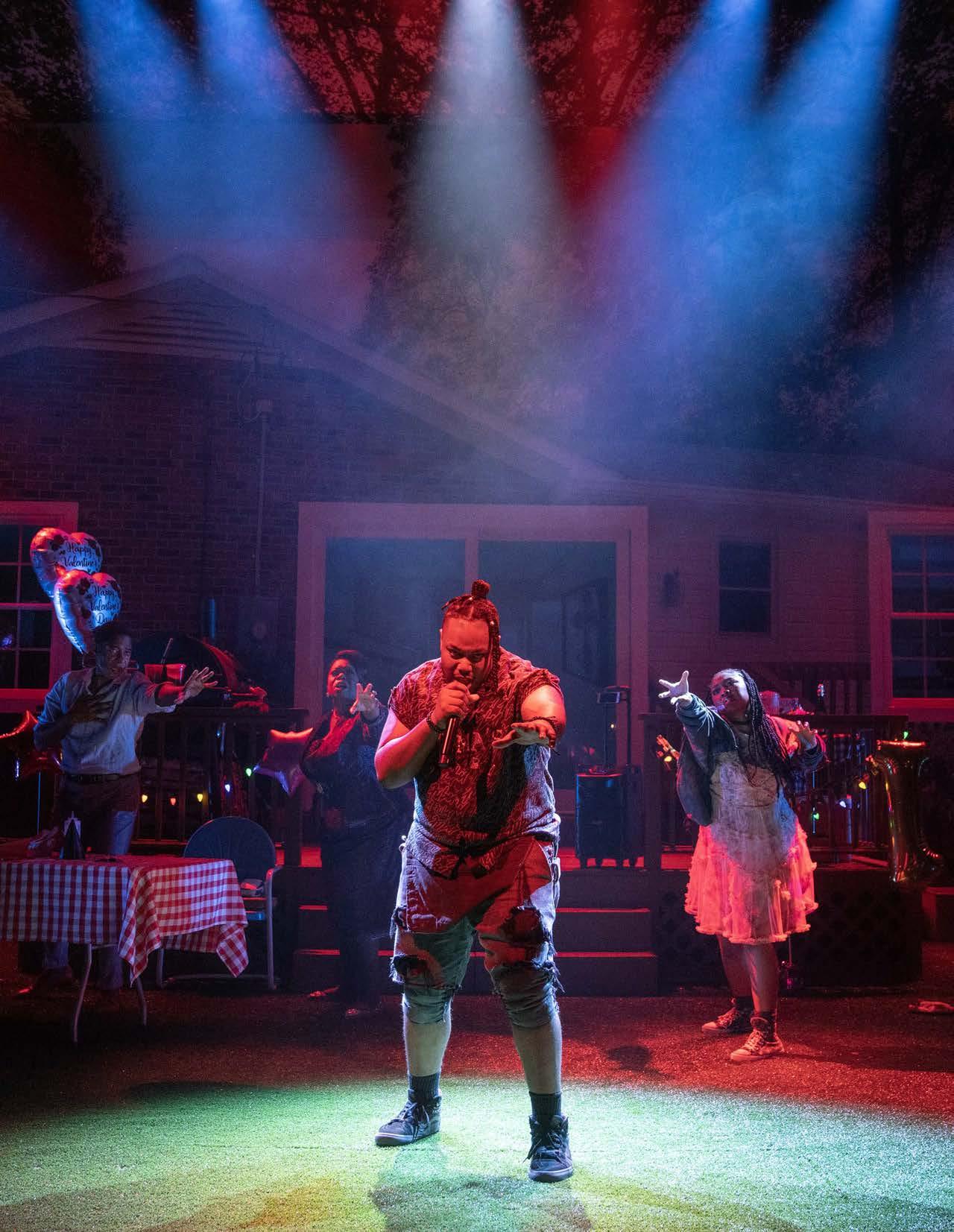 BILLY EUEGENE JONES AS REV, BENJA KAY THOMAS AS RABBY, MARCEL SPEARS AS JUICY AND ADRIANNA MITCHELL AS OPAL
BILLY EUEGENE JONES AS REV, BENJA KAY THOMAS AS RABBY, MARCEL SPEARS AS JUICY AND ADRIANNA MITCHELL AS OPAL
29
PHOTO
BY JOAN MARCUS
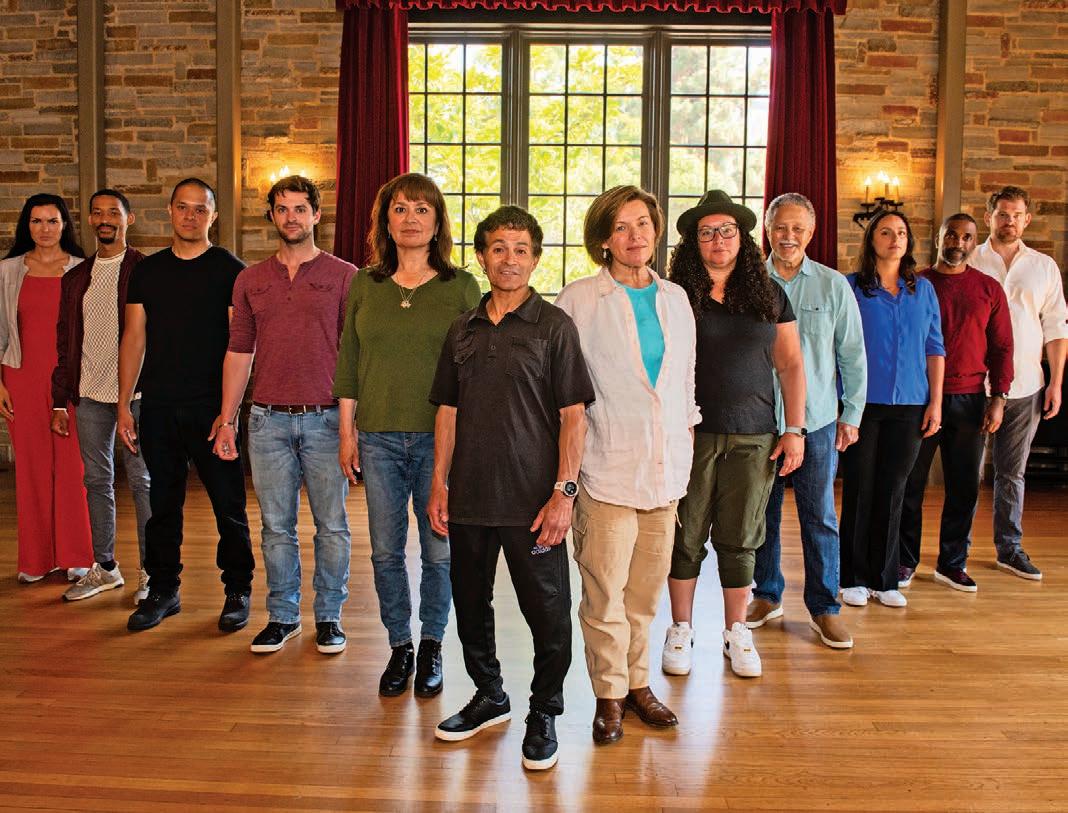
THE
JUNE 1–AUGUST 5, 2024
SATURDAYS , 9AM–1PM @ GEFFEN PLAYHOUSE
The Veterans Cultural Identity Monologue Writing & Performance Workshop is a 10-week theater-making intensive, in which an ensemble of military veterans come together to create personal, original monologues and share their work in a performance at Geffen Playhouse in the Gil Cates Theater.
APPLY BY APRIL 19, 2024—SPACE IS LIMITED!
EDUCATION & COMMUNITY ENGAGEMENT PHOTO BY ISAAK BERLINER
TO APPLY AND FOR MORE INFORMATION, VISIT geffenplayhouse.org/veterans
NOW ACCEPTING APPLICATIONS! PHOTO BY ISAAK BERLINER
BEYOND
BARRACKS VETERANS WRITING & PERFORMANCE WORKSHOP
HERE FOR EVERY STAGE OF THE JOURNEY. City National Bank Member FDIC. City National Bank is a subsidiary of Royal Bank of Canada. ©2024 City National Bank. All Rights Reserved. 2178315-04 Let’s connect at cnb.com City National® proudly supports GEFFEN PLAYHOUSE.

EDUCATION@GEFFENPLAYHOUSE.ORG 10886 LE CONTE AVE LOS ANGELES, CA 90024





 PLAYWRIGHT JAMES IJAMES
PHOTO BY JUSTIN BETTMAN
PLAYWRIGHT JAMES IJAMES
PHOTO BY JUSTIN BETTMAN














































 MARCEL SPEARS AS JUICY AND ADRIANNA MITCHELL AS OPAL
PHOTO BY JOAN MARCUS
MARCEL SPEARS AS JUICY AND ADRIANNA MITCHELL AS OPAL
PHOTO BY JOAN MARCUS











 BILLY EUEGENE JONES AS REV, BENJA KAY THOMAS AS RABBY, MARCEL SPEARS AS JUICY AND ADRIANNA MITCHELL AS OPAL
BILLY EUEGENE JONES AS REV, BENJA KAY THOMAS AS RABBY, MARCEL SPEARS AS JUICY AND ADRIANNA MITCHELL AS OPAL

